How to Troubleshoot and Fix a Whirlpool Refrigerator Not Cooling
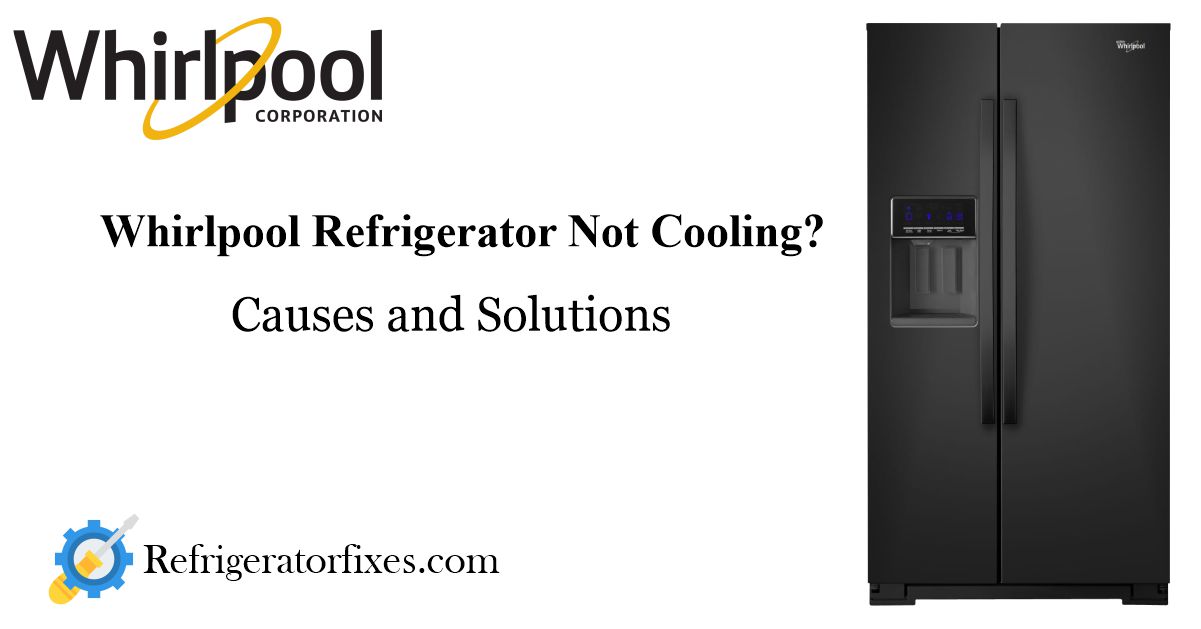
How to Troubleshoot and Fix a Whirlpool Refrigerator Not Cooling: Is your Whirlpool refrigerator not cooling properly? Don’t worry, we’ve got you covered. A malfunctioning refrigerator can be a major inconvenience, but with some troubleshooting, you can often identify and resolve the issue yourself. In this comprehensive guide, we will walk you through the possible causes of a Whirlpool refrigerator not cooling and provide you with practical solutions to get it back to its optimal cooling performance.
Whirlpool refrigerators are among the most reliable and durable appliances in the market, according to a survey of hundreds of repair technicians. Whirlpool is also one of the longest-standing and most well-known brands in the appliance industry, with a history that dates back to the early 1900s.
READ ALSO: How to Troubleshoot and Fix a Samsung Refrigerator Not Cooling
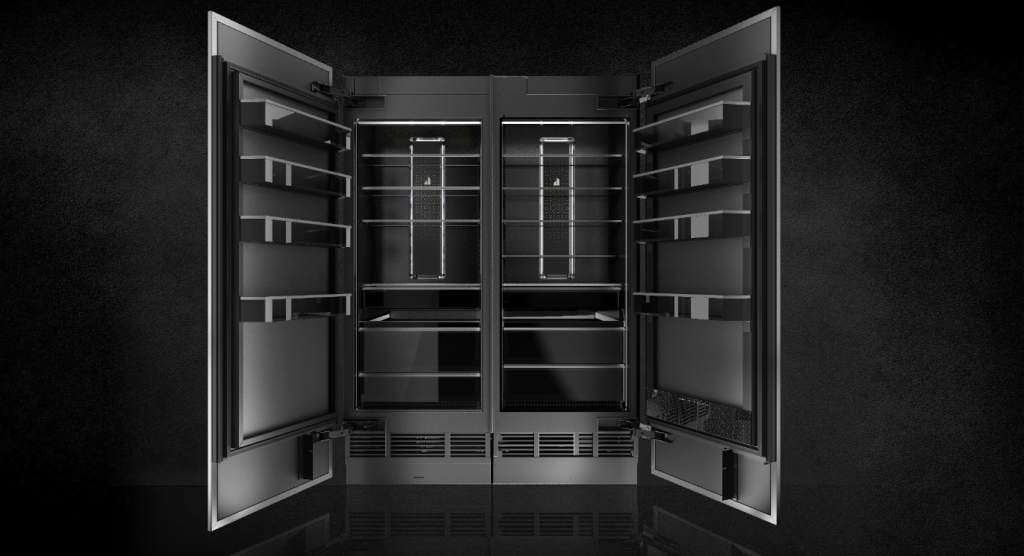
Whirlpool’s History of Refrigerator Innovation
Whirlpool Corporation was founded in 1911 as the Upton Machine Company, a manufacturer of electric motor-driven wringer washers. In 1929, the company merged with the Nineteen Hundred Washer Company and expanded its product line to include refrigerators, ranges, and water heaters. In 1950, the company changed its name to Whirlpool Corporation and introduced the first automatic, spinner-type washer.
Whirlpool has been a pioneer in refrigerator technology and design, offering a variety of models and features to suit different needs and preferences. Some of the notable innovations from Whirlpool include:
- The first frost-free refrigerator in 1958, which eliminated the need for manual defrosting and reduced freezer burn.
- The first refrigerator with a built-in ice maker in 1965, which provided a convenient and sanitary way to make ice cubes.
- The first refrigerator with a reversible door in 1972, which allowed users to change the direction of the door swing to fit their kitchen layout.
- The first refrigerator with a through-the-door ice and water dispenser in 1985, which offered easy access to chilled water and ice without opening the door.
- The first refrigerator with a bottom freezer in 1996, which placed the most frequently used items at eye level and improved energy efficiency.
- The first refrigerator with a French door design in 2005, which combined the benefits of a bottom freezer and a side-by-side refrigerator, with two narrow doors that opened to a spacious interior.
- The first refrigerator with a smart display in 2017, which enabled users to control the refrigerator settings, access recipes, stream music, and more from a touchscreen panel on the door.
Whirlpool’s Commitment to Durability and Sustainability
Whirlpool refrigerators are designed to last for many years, with an average lifespan of about 14 years for the Cabrio model. Whirlpool also received the Longtime® certification in France, which is the first label that identifies and enhances the value of products designed to last.
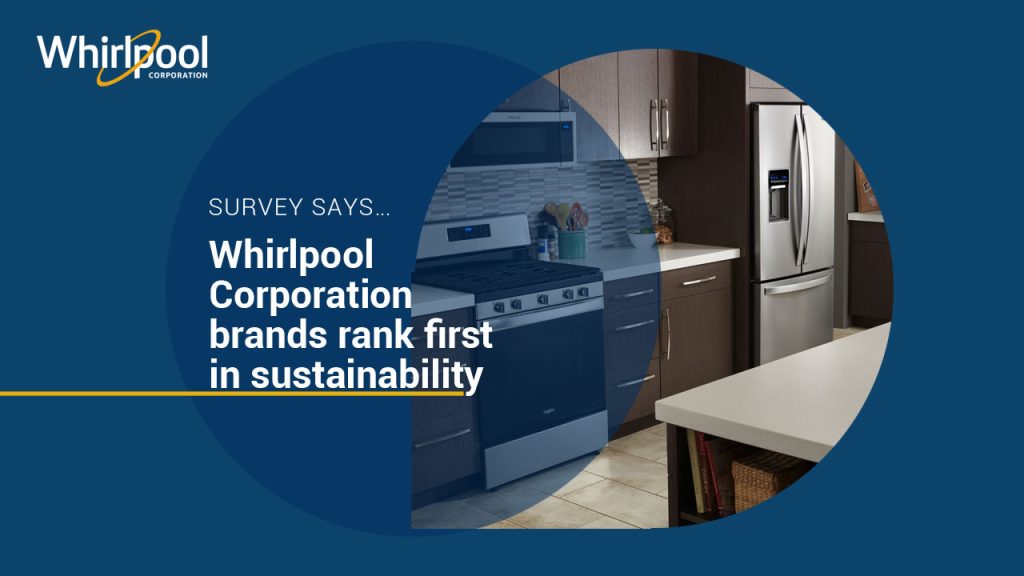
Whirlpool is also committed to reducing the environmental impact of its refrigerators, by using more recycled materials, improving energy efficiency, and minimizing waste. Whirlpool has achieved the following milestones in its sustainability efforts:
- In 2019, Whirlpool recycled more than 95% of its manufacturing waste globally and diverted more than 500,000 tons of waste from landfills.
- In 2020, Whirlpool reduced its greenhouse gas emissions by 18% compared to 2016 and increased its use of renewable energy by 34%.
- In 2021, Whirlpool launched the first refrigerator in the US market that uses a natural refrigerant called R600a, which has a lower global warming potential than conventional refrigerants.
Whirlpool refrigerators are a great choice for anyone looking for a high-quality, reliable, and eco-friendly appliance that can keep their food fresh and safe. Whirlpool offers a wide range of models and sizes, from compact to large capacity, and from basic to smart features, to suit any budget and lifestyle. Whirlpool also provides excellent customer service and support, with a network of authorized service providers and a comprehensive warranty program. Whirlpool refrigerators are more than just appliances, they are partners in everyday life.
CHECK OUT: GE Refrigerator Not Cooling: Causes and Solutions
How to Troubleshoot and Fix a Whirlpool Refrigerator Not Cooling
When your Whirlpool refrigerator stops cooling properly, it can be frustrating and lead to concerns about food spoilage. However, before you panic and call for professional help, it’s important to troubleshoot the issue and see if you can resolve it on your own. There are several potential causes for a refrigerator not cooling, ranging from simple fixes to more complex problems. By following the steps outlined in this guide, you can diagnose and potentially fix the issue without breaking the bank.
Checking the Temperature Setting
The first step in troubleshooting a Whirlpool refrigerator that’s not cooling is to verify the temperature setting. It’s possible that someone in your household accidentally changed the thermostat, causing the refrigerator to not cool properly. The optimal temperature setting for most refrigerators is around 37°F (2.8°C). Check your owner’s manual to confirm the recommended temperature for your specific model.
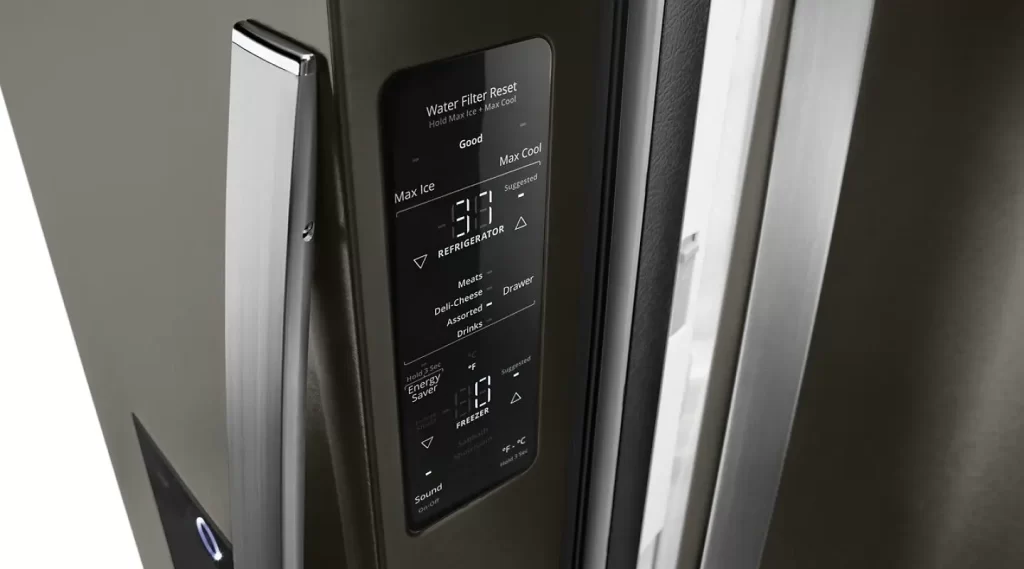
To adjust the temperature setting, locate the thermostat control usually located inside the refrigerator. Depending on your model, it may be a dial, slider, or digital display. Make sure the setting is at the desired temperature and give the fridge some time to reach the new setting. It may take up to 24 hours for the refrigerator to cool down completely after a temperature adjustment.
Cleaning the Condenser Coils
Dirty condenser coils are a common cause of a Whirlpool refrigerator not cooling properly. Condenser coils are responsible for dissipating heat as the refrigerant passes through them. Over time, these coils can accumulate dirt, dust, and debris, hindering their ability to release heat effectively. This can result in the refrigerator working harder to maintain the desired temperature, leading to inadequate cooling.
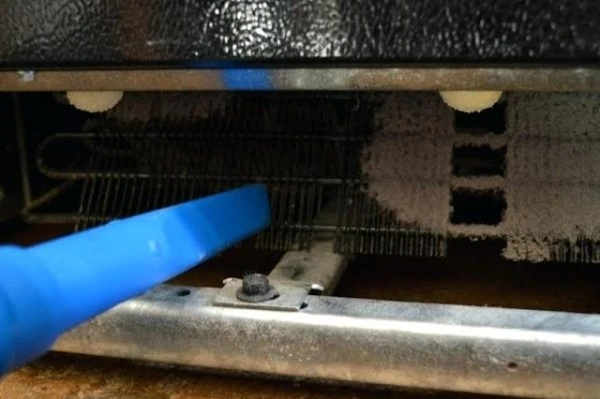
To clean the condenser coils, start by unplugging the refrigerator from the power source. Next, locate the condenser coils, which are usually located at the back of the refrigerator or beneath it. Depending on your model, you may need to remove a panel or grille to access the coils. Use a vacuum cleaner with a brush attachment to gently remove any dust or debris from the coils. You can also use a soft brush or cloth to wipe away stubborn dirt. Once the coils are clean, plug the refrigerator back in and monitor its cooling performance.
Ensuring Proper Ventilation
Proper ventilation is essential for a refrigerator to cool effectively. If the refrigerator is not getting enough airflow, it can lead to inadequate cooling. Check that there is sufficient clearance around the refrigerator, especially at the back and sides. Most refrigerators require at least 1 inch of clearance at the back and half an inch on the sides to allow for proper air circulation.
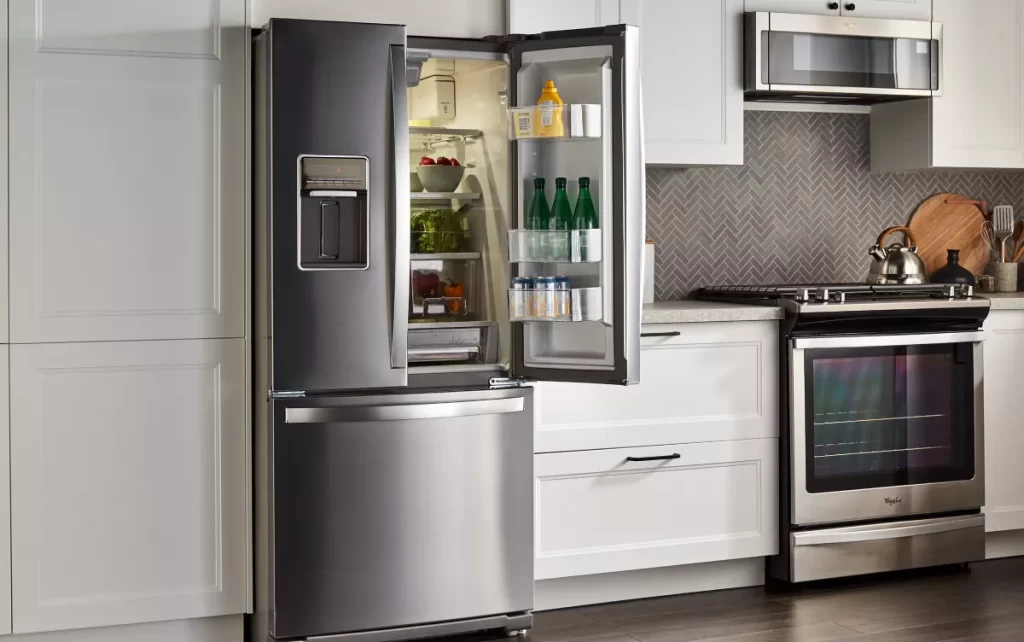
Additionally, make sure that the vents inside the refrigerator and freezer compartments are not blocked by food items or containers. Blocked vents can restrict the flow of cold air, causing the refrigerator not to cool properly. Rearrange the items in your refrigerator to ensure that the vents are clear and unobstructed.
Checking the Door Seals
Faulty or damaged door seals can compromise the cooling efficiency of your Whirlpool refrigerator. The door seals, also known as gaskets, are responsible for creating an airtight seal when the doors are closed. If the seals are worn, torn, or dirty, cool air can escape, causing the refrigerator to struggle to maintain the desired temperature.
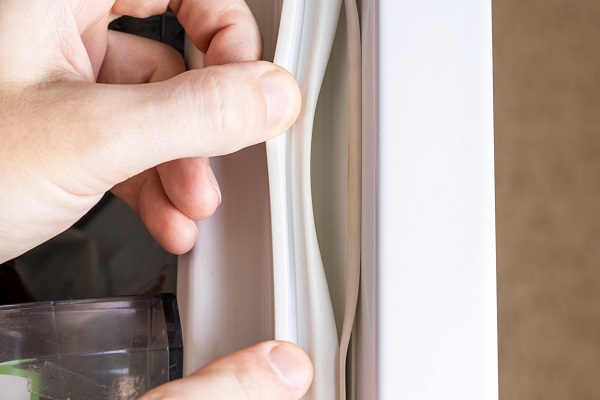
To check the door seals, close the refrigerator door on a piece of paper or a dollar bill, making sure it is positioned between the seal and the refrigerator. Gently pull on the paper or bill. If it slides out easily without any resistance, the door seals may need to be replaced. Inspect the seals for any signs of damage or wear, such as cracks or tears. Clean the seals with warm, soapy water to remove any dirt or residue that may be affecting their performance.
Organizing Food Storage
An overcrowded refrigerator can obstruct airflow and prevent proper cooling. If your Whirlpool refrigerator is packed with food items, the air may not circulate adequately, resulting in uneven cooling or insufficient cooling altogether. Take some time to declutter and organize your refrigerator, ensuring that there is enough space between items for air to flow freely.
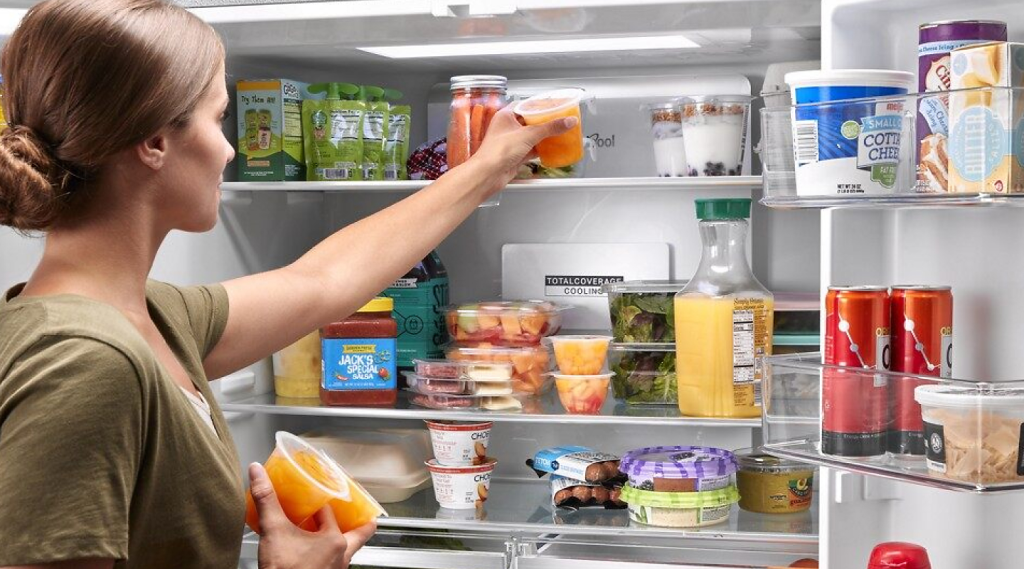
Try not to overload the refrigerator with too many items, especially near the vents. Distribute the food evenly and avoid blocking the vents with large or bulky containers. This will help promote better airflow and improve the cooling efficiency of your refrigerator.
Verifying the Installation Location
The location where you install your Whirlpool refrigerator can impact its cooling performance. Indoor refrigerators are designed to operate within a controlled climate, typically found inside a home. If you have installed your refrigerator in a garage or an area with extreme temperatures, it may struggle to cool properly.
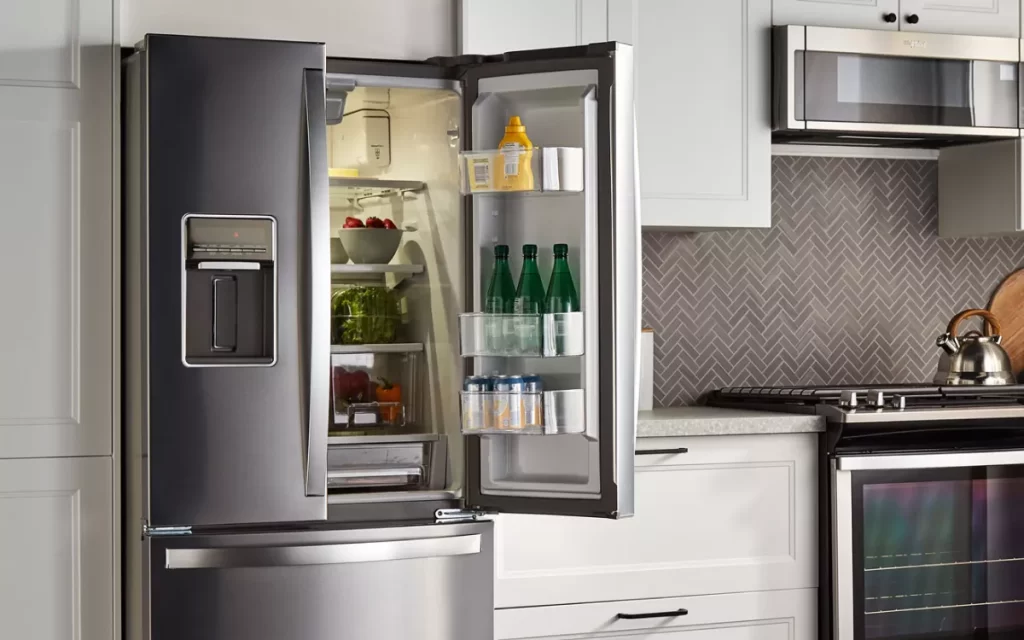
Check the installation guidelines in your owner’s manual to ensure that your refrigerator is placed in an appropriate location. If necessary, consider relocating the refrigerator to a more suitable environment with a more consistent temperature range.
Inspecting the Evaporator Fan Motor
The evaporator fan motor is responsible for circulating cold air from the evaporator coils throughout the refrigerator and freezer compartments. If the fan motor is not functioning correctly, the refrigerator may not cool as it should. Start by locating the evaporator fan motor, usually found in the freezer compartment behind a panel.
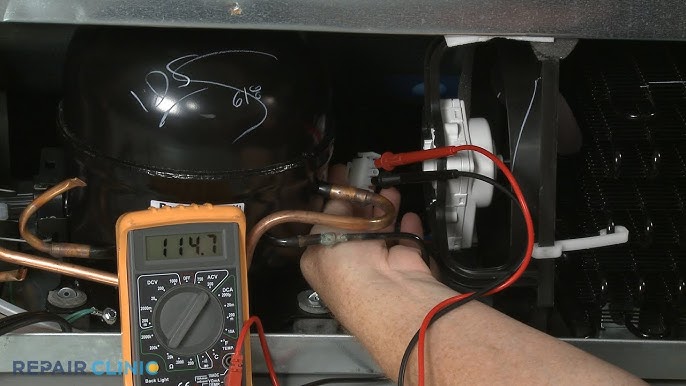
Check if the fan blade spins freely when turned by hand. If it doesn’t rotate smoothly or if there is resistance, the evaporator fan motor may be defective and need to be replaced. You can also test the motor’s windings using a multimeter to check for continuity. If the windings do not have continuity, it’s a sign that the fan motor is faulty and requires replacement.
Testing the Condenser Fan Motor
The condenser fan motor plays a crucial role in cooling the condenser coils, which helps dissipate heat from the refrigerator. If the condenser fan motor malfunctions, it can lead to inadequate cooling. Begin by inspecting the fan blade for any obstructions that may be preventing it from spinning freely.
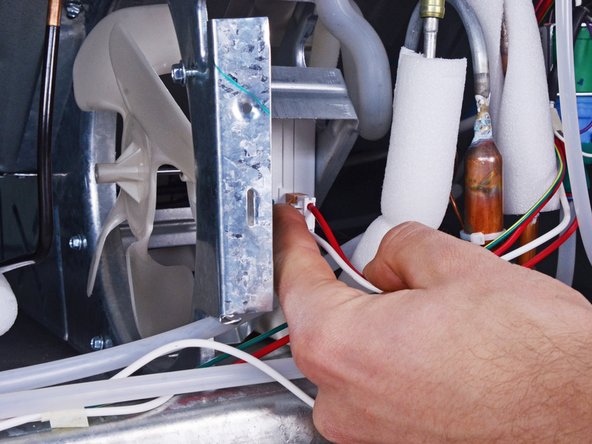
Try manually rotating the fan motor blade. It should move smoothly without any resistance. If the blade doesn’t turn freely, it indicates a problem with the condenser fan motor. You can further confirm the motor’s functionality by using a multimeter to test for continuity in the motor windings. If there is no continuity, it’s a clear indication that the condenser fan motor needs to be replaced.
Examining the Start Relay
The start relay is responsible for supplying power to the compressor, which is crucial for proper cooling. If the start relay is faulty, it can prevent the compressor from running efficiently, leading to a refrigerator that doesn’t cool properly. To check the start relay, start by unplugging the refrigerator and locating the relay, usually attached to the side of the compressor.
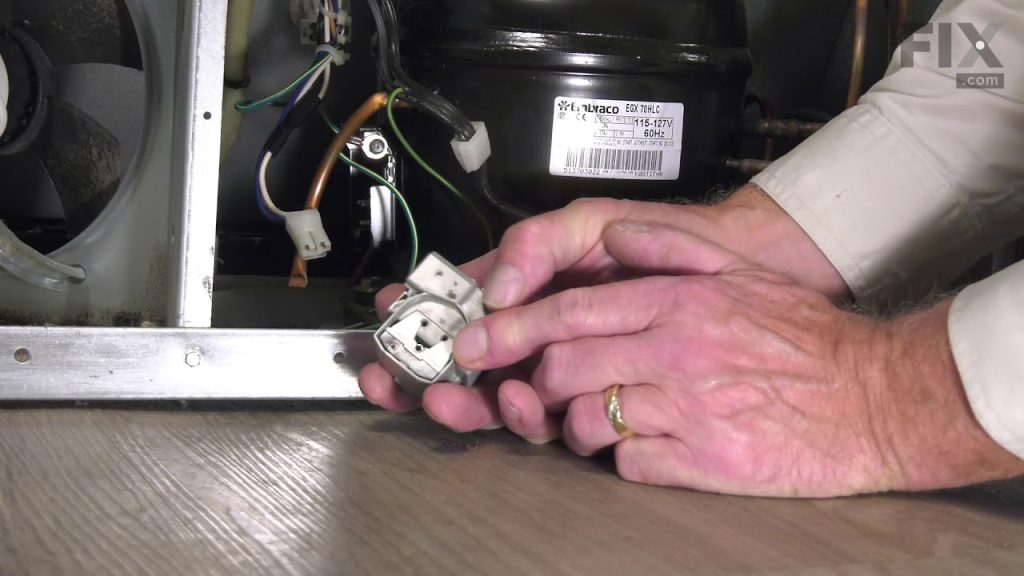
Shake the start relay gently and listen for any rattling sounds. If you hear rattling, it’s a sign that the start relay is defective and needs to be replaced. If there is no rattling, use a multimeter to test the relay for continuity. A normal reading should show continuity between the various terminals. If there is no continuity, it indicates a faulty start relay that should be replaced.
Addressing Faulty Internal Parts
If you have followed all the previous troubleshooting steps and your Whirlpool refrigerator still isn’t cooling properly, it’s possible that there is a problem with one of the internal components like the compressor or the main control board. These components are more complex and require professional expertise to diagnose and repair.
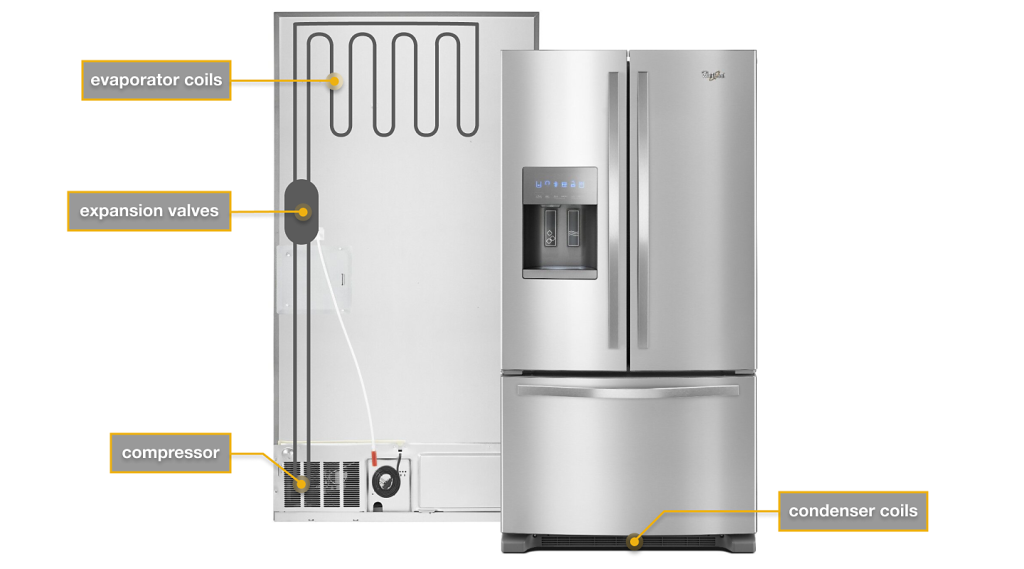
In such cases, it is advisable to contact a licensed technician or reach out to Whirlpool’s customer service for further assistance. They will be able to assess the issue accurately and provide the necessary repair or replacement options.
READ: LG Refrigerator Not Cooling: Causes and Solutions
FAQs
Why is my Whirlpool refrigerator not cooling after a power outage?
A power outage can sometimes disrupt the cooling cycle of a refrigerator, causing it to stop cooling properly. When the power is restored, it may take some time for the refrigerator to stabilize and resume normal cooling. Give it a few hours to see if it returns to the proper temperature. If the problem persists, it’s recommended to follow the troubleshooting steps outlined in this guide.
Can I fix a Whirlpool refrigerator that is not cooling myself?
Many common issues with a Whirlpool refrigerator not cooling can be resolved through troubleshooting and DIY solutions. However, it’s important to remember that refrigerators are complex appliances, and attempting complex repairs without proper knowledge and training can be dangerous. If you are unsure or uncomfortable with DIY repairs, it’s best to seek professional help to avoid further damage or injuries.
How often should I clean the condenser coils on my Whirlpool refrigerator?
It is recommended to clean the condenser coils on your Whirlpool refrigerator at least once or twice a year. However, if you have pets or live in a dusty environment, more frequent cleaning may be necessary. Regular maintenance and cleaning of the condenser coils will help ensure optimal cooling performance and extend the lifespan of your refrigerator.
Why is my Whirlpool refrigerator not cooling but the freezer is working?
If your Whirlpool refrigerator’s freezer is working fine, but the refrigerator compartment is not cooling, it could indicate a problem with the airflow between the two compartments. Check for any obstructions or blockages in the vents that might be preventing the cold air from flowing into the refrigerator section. Additionally, inspect the damper control to ensure it is functioning correctly and allowing the cold air to enter the refrigerator.
Should I repair or replace my Whirlpool refrigerator if it’s not cooling?
The decision to repair or replace a Whirlpool refrigerator depends on various factors such as the age of the appliance, the cost of repairs, and the extent of the problem. If your refrigerator is relatively new and the repair cost is reasonable, it may be worth fixing. However, if the refrigerator is older, the repair cost is high, or multiple components are failing, it might be more cost-effective to invest in a new refrigerator that comes with a warranty.
In Conclusion
A Whirlpool refrigerator not cooling properly can be a frustrating experience, but with the right troubleshooting steps, you can often identify and resolve the issue. By checking the temperature setting, cleaning the condenser coils, ensuring proper ventilation, inspecting the door seals, organizing food storage, verifying the installation location, and examining internal components, you can increase the chances of restoring your refrigerator’s optimal cooling performance.
If all else fails, don’t hesitate to seek professional assistance to diagnose and repair any complex issues. Keep your refrigerator running smoothly and enjoy the benefits of fresh and properly chilled food.